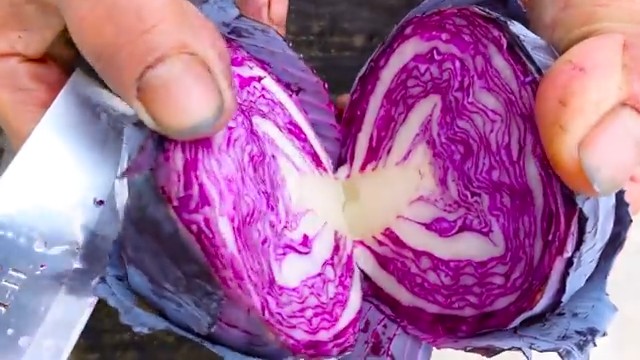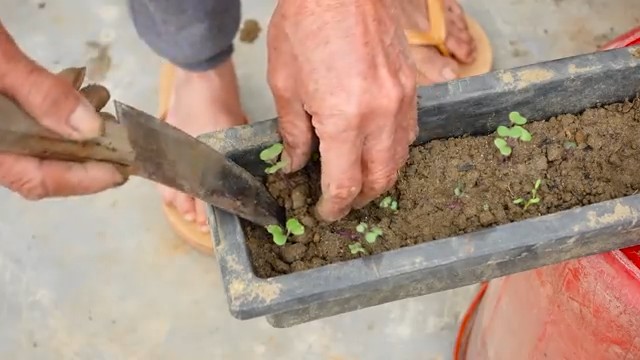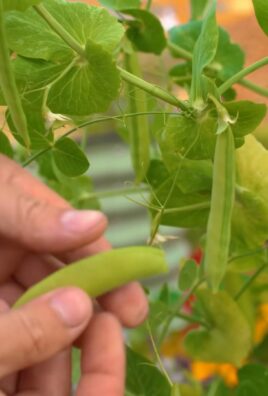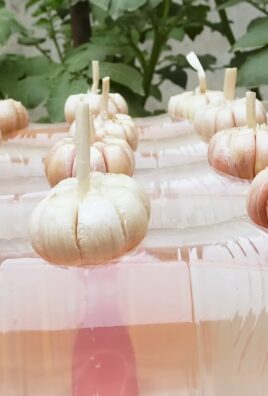Growing Queen Cabbage might sound like something reserved for royalty, but trust me, you don’t need a green thumb blessed by a king to cultivate this magnificent vegetable in your own backyard! Have you ever dreamt of harvesting a cabbage so large and impressive, it becomes the envy of the neighborhood? Well, this DIY guide is your royal decree to cabbage-growing success!
Cabbage, in its various forms, has been a staple food for centuries, gracing tables from ancient Rome to medieval Europe. It’s a symbol of sustenance and resilience, a humble vegetable that has nourished generations. But the “Queen Cabbage,” with its impressive size and vibrant leaves, takes this humble vegetable to a whole new level. It’s not just about food; it’s about the satisfaction of nurturing something truly spectacular.
Why do you need this DIY trick, you ask? Because growing Queen Cabbage isn’t just about throwing some seeds in the ground and hoping for the best. It requires a little know-how, a few clever hacks, and a dash of dedication. I’m here to share my secrets, gleaned from years of experience, to help you avoid common pitfalls and maximize your yield. Imagine the delicious coleslaw, the hearty soups, and the sheer bragging rights you’ll enjoy when you present your own homegrown Queen Cabbage. Let’s get started and transform your garden into a cabbage kingdom!

Königskohl selbst anbauen: Dein umfassender DIY-Leitfaden
Hey Gartenfreunde! Habt ihr schon mal von Königskohl gehört? Das ist nicht einfach nur Kohl, das ist eine imposante, ertragreiche und superleckere Kohlart, die eurem Garten einen Hauch von Exotik verleiht. Ich zeige euch, wie ihr diesen Giganten selbst anbauen könnt – von der Aussaat bis zur Ernte. Keine Angst, es ist einfacher als es aussieht!
Was ist Königskohl überhaupt?
Königskohl, auch bekannt als Baumkohl oder Ewiger Kohl (Brassica oleracea var. ramosa), ist eine mehrjährige Kohlsorte, die bis zu zwei Meter hoch werden kann. Das Besondere: Man erntet nicht den Kopf, sondern die Blätter. Und das über Jahre hinweg! Die Blätter sind nahrhaft, vielseitig verwendbar und schmecken leicht süßlich. Perfekt für Smoothies, Salate, Suppen oder als gedünstetes Gemüse.
Warum Königskohl anbauen?
* Mehrjährig: Einmal gepflanzt, erntet ihr jahrelang.
* Ertragreich: Königskohl liefert eine riesige Menge an Blättern.
* Robust: Er ist relativ widerstandsfähig gegen Schädlinge und Krankheiten.
* Vielseitig: Die Blätter sind in der Küche vielfältig einsetzbar.
* Dekorativ: Mit seiner Höhe und den üppigen Blättern ist er ein echter Hingucker im Garten.
Die Vorbereitung: Was du brauchst
Bevor wir loslegen, hier eine Liste mit allem, was du für den Anbau von Königskohl benötigst:
* Königskohlsamen oder Jungpflanzen: Samen sind günstiger, Jungpflanzen sparen Zeit.
* Anzuchterde: Für die Aussaat im Haus.
* Töpfe oder Anzuchtschalen: Für die Vorzucht.
* Gartenerde: Für das Beet oder den Kübel.
* Kompost oder organischer Dünger: Für eine gute Nährstoffversorgung.
* Gießkanne oder Schlauch: Zum Bewässern.
* Pflanzstäbe: Um die Pflanzen zu stützen, besonders wenn sie größer werden.
* Gartenschere oder Messer: Für die Ernte.
* (Optional) Schneckenschutz: Königskohl ist leider auch bei Schnecken beliebt.
Aussaat oder Jungpflanzen? Die Qual der Wahl
Du hast zwei Möglichkeiten, Königskohl anzubauen: aus Samen oder mit Jungpflanzen. Beide haben ihre Vor- und Nachteile.
* Aussaat: Günstiger, aber zeitaufwendiger. Du musst die Samen vorziehen und die Jungpflanzen pikieren.
* Jungpflanzen: Teurer, aber schneller. Du kannst die Pflanzen direkt ins Beet setzen.
Ich persönlich ziehe es vor, Königskohl aus Samen zu ziehen, weil ich den ganzen Prozess von Anfang an begleiten möchte. Aber wenn du wenig Zeit hast, sind Jungpflanzen eine gute Alternative.
Aussaat: Schritt für Schritt zum Königskohl
Wenn du dich für die Aussaat entschieden hast, hier eine detaillierte Anleitung:
1. Der richtige Zeitpunkt
Der beste Zeitpunkt für die Aussaat ist im Frühjahr (März/April) oder im Sommer (Juli/August). Bei einer Aussaat im Frühjahr kannst du die Pflanzen im Herbst ernten, bei einer Aussaat im Sommer im nächsten Frühjahr.
2. Die Vorbereitung der Anzuchtgefäße
Fülle die Töpfe oder Anzuchtschalen mit Anzuchterde. Drücke die Erde leicht an und befeuchte sie mit einer Sprühflasche.
3. Die Aussaat der Samen
Lege die Samen im Abstand von etwa 2-3 cm auf die Erde. Bedecke sie mit einer dünnen Schicht Erde (ca. 0,5 cm) und befeuchte die Erde erneut.
4. Die richtige Umgebung
Stelle die Anzuchtgefäße an einen hellen und warmen Ort (ca. 18-20°C). Ideal ist ein Fensterbrett oder ein Gewächshaus. Achte darauf, dass die Erde immer feucht bleibt, aber nicht nass.
5. Die Keimung
Die Samen keimen in der Regel innerhalb von 1-2 Wochen. Sobald die Keimlinge die ersten Blätter gebildet haben, kannst du sie pikieren.
6. Das Pikieren
Pikiere die Keimlinge, sobald sie groß genug sind, um sie zu handhaben. Das bedeutet, dass du sie vorsichtig aus der Anzuchtschale nimmst und in einzelne Töpfe umpflanzt. Verwende dafür normale Blumenerde oder Gartenerde.
7. Die Pflege der Jungpflanzen
Gieße die Jungpflanzen regelmäßig und dünge sie alle zwei Wochen mit einem organischen Dünger. Stelle sie an einen hellen Ort, aber vermeide direkte Sonneneinstrahlung.
Das Auspflanzen: Ab ins Beet!
Sobald die Jungpflanzen etwa 15-20 cm groß sind, kannst du sie ins Beet oder in einen Kübel auspflanzen.
1. Der richtige Standort
Königskohl bevorzugt einen sonnigen Standort mit einem nährstoffreichen und gut durchlässigen Boden. Vermeide Staunässe.
2. Die Vorbereitung des Beets
Lockere den Boden gründlich auf und entferne Unkraut. Arbeite Kompost oder organischen Dünger in den Boden ein, um die Nährstoffversorgung zu verbessern.
3. Das Auspflanzen
Grabe Löcher im Abstand von etwa 60-80 cm. Setze die Jungpflanzen in die Löcher und fülle sie mit Erde auf. Drücke die Erde leicht an und gieße die Pflanzen gründlich.
4. Die Stützung
Da Königskohl sehr hoch werden kann, ist es ratsam, die Pflanzen mit Pflanzstäben zu stützen. So verhinderst du, dass sie bei Wind umknicken.
Die Pflege: Damit dein Königskohl prächtig gedeiht
Königskohl ist relativ pflegeleicht, aber ein paar Dinge solltest du beachten:
* Gießen: Gieße die Pflanzen regelmäßig, besonders bei Trockenheit. Achte darauf, dass die Erde immer feucht bleibt, aber nicht nass.
* Düngen: Dünge die Pflanzen alle 4-6 Wochen mit einem organischen Dünger.
* Unkraut entfernen: Entferne regelmäßig Unkraut, um die Nährstoffkonkurrenz zu reduzieren.
* Schneckenbekämpfung: Königskohl ist leider auch bei Schnecken beliebt. Schütze deine Pflanzen mit Schneckenzäunen oder anderen Schneckenbekämpfungsmitteln.
* Schädlinge und Krankheiten: Achte auf Anzeichen von Schädlingen oder Krankheiten und bekämpfe sie gegebenenfalls mit geeigneten Mitteln. Kohlweißlinge können ein Problem sein, hier hilft ein Netz.
Die Ernte: Endlich ernten!
Die Ernte von Königskohl ist denkbar einfach: Du kannst die Blätter nach Bedarf ernten, sobald sie groß genug sind.
1. Der richtige Zeitpunkt
Ernte die Blätter, wenn sie eine Größe von etwa 20-30 cm erreicht haben. Die jüngeren Blätter sind zarter und schmecken besser.
2. Die Erntetechnik
Schneide die Blätter mit einer Gartenschere oder einem Messer ab. Achte darauf, dass du die Pflanze nicht beschädigst. Du kannst die unteren Blätter zuerst ernten und die oberen Blätter wachsen lassen.
3. Die Lagerung
Die geernteten Blätter sind im Kühlschrank etwa 1-2 Tage haltbar. Du kannst sie auch einfrieren oder trocknen.
Verwendung in der Küche: Königskohl-Rezepte
Königskohl ist in der Küche vielseitig einsetzbar. Hier ein paar Ideen:
* Smoothies: Gib ein paar Blätter in deinen Smoothie für einen extra Nährstoffkick.
* Salate: Schneide die Blätter in feine Streifen und gib sie in deinen Salat.
* Suppen: Verwende die Blätter als Zutat für deine Suppen.
* Gedünstetes Gemüse: Dünste die Blätter mit etwas Knoblauch und Olivenöl.
* Chips: Backe die Blätter im Ofen zu knusprigen Chips.
Überwinterung: Königskohl im Winter
Königsk

Conclusion
So, there you have it! Growing Queen Cabbage doesn’t have to be a daunting task reserved for seasoned gardeners. With a little patience, the right techniques, and this simple DIY trick, you can cultivate these impressive vegetables right in your own backyard. We’ve shown you how to nurture these giants from seed to harvest, and hopefully, dispelled any myths about their difficulty.
This method isn’t just about growing any cabbage; it’s about growing *Queen* Cabbage – cabbages that are not only delicious but also a source of immense pride. Imagine the satisfaction of serving a meal featuring a cabbage you nurtured from a tiny seed!
Why is this DIY trick a must-try? Because it simplifies the process, increases your chances of success, and allows you to tailor the growing conditions to your specific environment. It’s about taking control and maximizing your yield. Plus, it’s incredibly rewarding to witness the transformation from a small seedling to a massive, leafy head.
Looking for variations? Consider experimenting with different soil amendments to see what works best in your area. Some gardeners swear by adding bone meal for extra phosphorus, while others prefer compost tea for a boost of beneficial microbes. You can also try succession planting, sowing seeds every few weeks to ensure a continuous harvest throughout the growing season. Another variation is to try different varieties of Queen Cabbage. Some are more heat-tolerant, while others are better suited for cooler climates. Research which varieties thrive in your region and give them a try!
Don’t be afraid to get your hands dirty and experiment. Gardening is a journey of learning and discovery, and every season brings new opportunities to refine your techniques.
We are confident that with this DIY trick, you’ll be harvesting impressive Queen Cabbages in no time. So, grab your seeds, prepare your soil, and get ready to embark on this exciting gardening adventure.
We encourage you to try this DIY trick for growing Queen Cabbage and share your experiences with us! Let us know how it worked for you, what challenges you faced, and any tips you discovered along the way. Share your photos and stories in the comments below – we can’t wait to see your Queen Cabbage triumphs! Happy gardening!
Frequently Asked Questions (FAQ)
What exactly *is* Queen Cabbage, and why should I grow it?
Queen Cabbage isn’t a specific variety, but rather a term often used to describe exceptionally large and healthy cabbages. Growing them is rewarding for several reasons. First, the sheer size of these cabbages is impressive and makes for a great conversation starter. Second, they are incredibly versatile in the kitchen, offering a substantial yield for various dishes. Third, successfully growing such large vegetables is a testament to your gardening skills and provides a great sense of accomplishment. Finally, homegrown vegetables always taste better, and Queen Cabbage is no exception!
What are the most common problems when growing Queen Cabbage, and how can I prevent them?
Several common issues can plague Queen Cabbage crops. Cabbage worms and other pests are a frequent concern. To prevent them, consider using row covers to protect your plants, hand-picking the worms off the leaves, or using organic pest control methods like Bacillus thuringiensis (Bt). Another common problem is clubroot, a soilborne disease that affects the roots. To prevent clubroot, ensure your soil is well-drained and has a pH of 6.5-7.0. Crop rotation is also crucial. Finally, nutrient deficiencies can hinder growth. Regularly amend your soil with compost and consider using a balanced fertilizer to provide the necessary nutrients.
How much space does Queen Cabbage need to grow properly?
Queen Cabbage needs ample space to reach its full potential. As a general rule, allow at least 24-36 inches between plants and 36-48 inches between rows. This spacing allows for adequate airflow, sunlight penetration, and room for the large heads to develop without being crowded. If you’re growing in containers, choose pots that are at least 18-24 inches in diameter.
What kind of soil is best for growing Queen Cabbage?
Queen Cabbage thrives in rich, well-drained soil that is high in organic matter. Amend your soil with plenty of compost or well-rotted manure before planting. The ideal soil pH is between 6.5 and 7.0. A slightly acidic to neutral soil promotes optimal nutrient uptake. Consider conducting a soil test to determine your soil’s pH and nutrient levels and amend accordingly.
How often should I water my Queen Cabbage plants?
Consistent watering is crucial for growing large, healthy Queen Cabbages. Water deeply and regularly, especially during dry periods. Aim to keep the soil consistently moist but not waterlogged. A good rule of thumb is to water when the top inch of soil feels dry to the touch. Mulching around the plants can help retain moisture and suppress weeds.
What kind of fertilizer should I use for Queen Cabbage?
Queen Cabbage is a heavy feeder and requires a steady supply of nutrients. Use a balanced fertilizer with a higher nitrogen content during the early stages of growth to promote leafy growth. As the heads begin to form, switch to a fertilizer with a higher phosphorus and potassium content to support head development. Follow the instructions on the fertilizer packaging carefully to avoid over-fertilizing.
How long does it take to grow Queen Cabbage from seed to harvest?
The time it takes to grow Queen Cabbage from seed to harvest varies depending on the variety and growing conditions. Generally, it takes about 70-100 days from transplanting seedlings to harvest. Start seeds indoors 6-8 weeks before the last expected frost.
How do I know when my Queen Cabbage is ready to harvest?
Queen Cabbage is ready to harvest when the head is firm and solid to the touch. The size of the head will vary depending on the variety, but it should be large and well-formed. Check the maturity date for your specific variety as a guideline. You can also gently squeeze the head – if it feels dense and doesn’t give much, it’s likely ready.
Can I grow Queen Cabbage in containers?
Yes, you can grow Queen Cabbage in containers, but you’ll need to choose large containers that are at least 18-24 inches in diameter. Use a high-quality potting mix and ensure the containers have good drainage. Container-grown cabbages may require more frequent watering and fertilizing than those grown in the ground.
What are some good companion plants for Queen Cabbage?
Companion planting can help deter pests, attract beneficial insects, and improve the overall health of your Queen Cabbage plants. Good companion plants include:
* **Marigolds:** Repel nematodes and other pests.
* **Dill:** Attracts beneficial insects like ladybugs and lacewings.
* **Rosemary:** Deters cabbage moths.
* **Thyme:** Repels cabbage white butterflies.
* **Clover:** Acts as a living mulch and fixes nitrogen in the soil.
How do I store Queen Cabbage after harvesting?
To store Queen Cabbage after harvesting, remove any loose or damaged outer leaves. Wrap the head in plastic wrap or place it in a plastic bag and store it in the refrigerator. Queen Cabbage can typically be stored for several weeks under these conditions.
What if my Queen Cabbage head splits?
Splitting heads are often caused by inconsistent watering, especially after a period of drought. To prevent splitting, ensure consistent watering and avoid letting the soil dry out completely. If a head starts to split, harvest it immediately to prevent further damage.




Leave a Comment